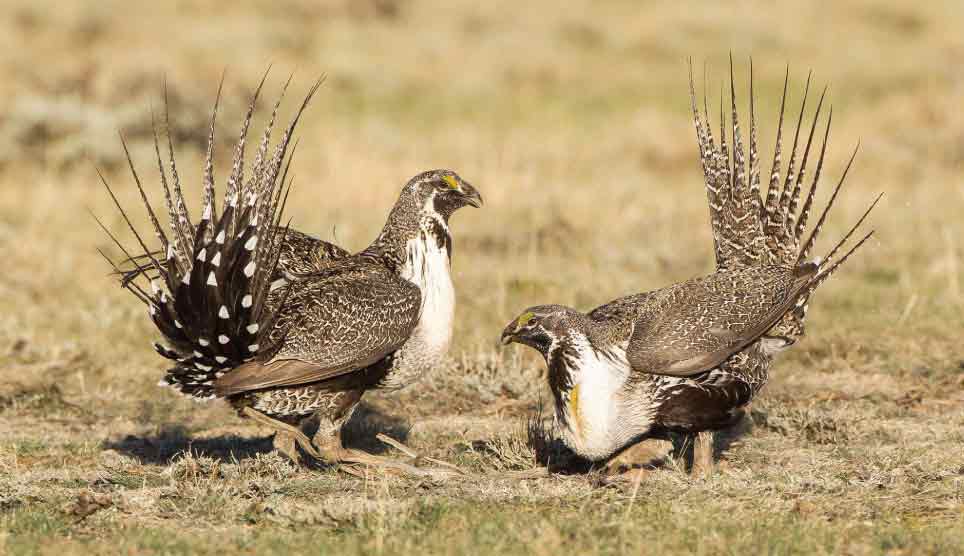
Greater Sage-Grouse
(Centrocercus urophasiarus)
- Size: 30" long // 2-5 pounds
- Diet: leaves, buds, flowers, forbs, and insects
- Seasonal Habits: Non-Migratory. In fall they grow fringe on the sides of their feet that works like snow shoes to help them in the deep winter snow
- Temperament: Not Aggressive
Each spring, at dawn, the sagebrush country of western North America fills with a strange burbling sound and an even stranger sight. Dozens of male Greater Sage-Grouse puff their chests and fan their starburst tails like avant-garde turkeys. They inflate bulbous yellow air sacs and thrust with their heads to produce weird pops and whistles. The rest of the year these birds melt away into the great sagebrush plains that are their only home. Habitat fragmentation and development have caused severe declines for this spectacular bird. They look similar to chickens and are brown with white flecks. They are a federal species of concern and have been the focus of sustained conservation efforts in eastern Oregon for the last two decades. When looking for a mate the males will spread their tail feathers similar to peacocks.